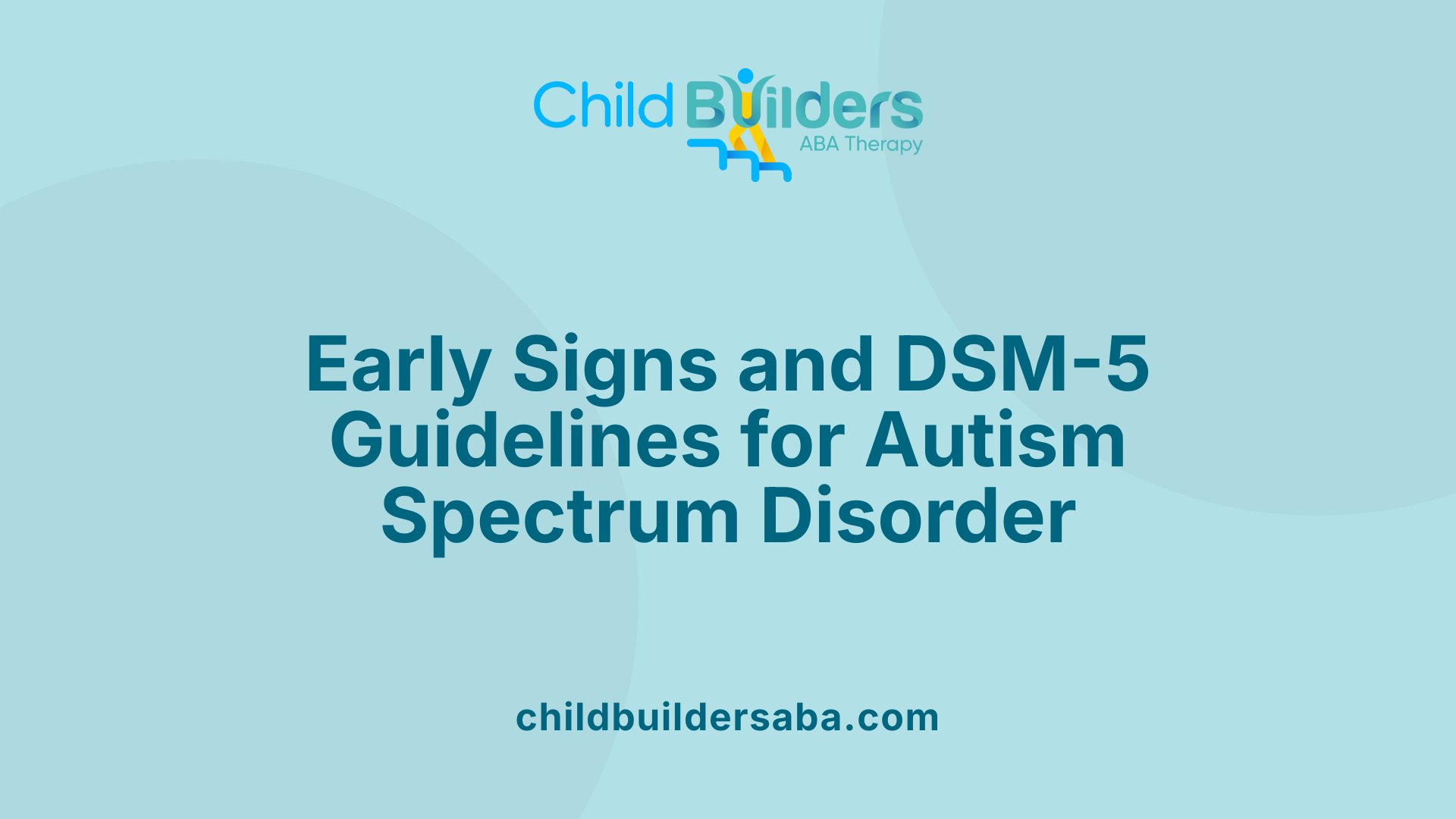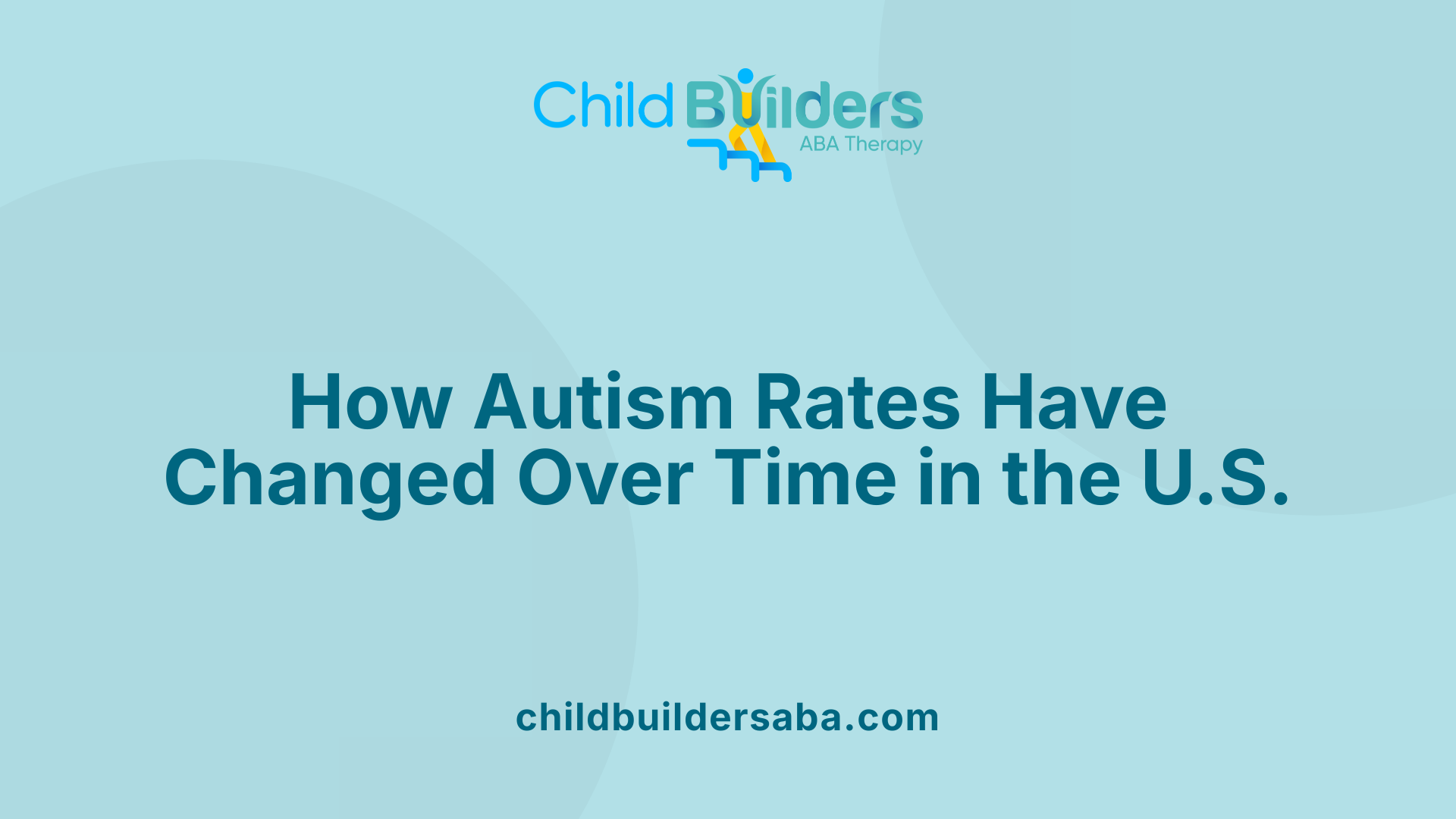Autism In The United States

An In-Depth Look at Autism Spectrum Disorder in the U.S.
Autism Spectrum Disorder (ASD) in the United States has garnered increased attention over recent decades, marked by significant changes in prevalence, diagnosis, and resource allocation. This comprehensive exploration highlights the characteristics, prevalence, disparities, research advances, and support mechanisms associated with autism across the nation.
Characteristics and Diagnostic Criteria of ASD in the U.S.

What are the characteristics and diagnostic criteria of autism spectrum disorder (ASD) in the United States?
Autism spectrum disorder (ASD) in the U.S. is primarily characterized by persistent challenges in social communication and interaction. Individuals with ASD often struggle with social-emotional reciprocity, meaning they may find it difficult to engage in back-and-forth conversations or to share emotions appropriately. Nonverbal communication issues, such as limited eye contact or atypical facial expressions, are also common. Developing and maintaining relationships can be difficult, affecting social and educational functioning.
In addition to social difficulties, ASD features restricted and repetitive behaviors. These can include repetitive motions, insistence on sameness, highly focused interests, and sensory sensitivities. The symptoms typically appear in early childhood and can vary widely in severity.
Diagnosis of ASD follows the criteria set out in the DSM-5, the standard diagnostic manual used in the United States. The DSM-5 requires that symptoms be present in the early developmental period, even if they are not recognized until later. These symptoms must also cause clinically significant impairment in social, occupational, or other important areas of functioning.
The DSM-5 specifies that severity levels are categorized into three: Level 1 (requiring support), Level 2 (requiring substantial support), and Level 3 (requiring very substantial support). This classification reflects the amount of support needed for individuals to function in daily life.
Diagnosis involves a comprehensive evaluation that includes developmental history, direct observation, and standardized assessments, often involving multidisciplinary teams. Recent updates in 2022 have aimed to improve clarity in the diagnostic criteria, ensuring earlier and more accurate identification.
Understanding these characteristics and criteria is crucial for early detection, intervention, and support for individuals with ASD and their families.
Prevalence and Trends of Autism in the U.S.

What is the current prevalence of autism in the United States?
As of 2025, approximately 1 in 36 children in the U.S. are diagnosed with autism spectrum disorder (ASD), which translates to about 2.7% of the population. This recent estimate by the CDC's Autism and Developmental Disabilities Monitoring Network reveals a significant increase in autism prevalence over the past two decades.
Data collected from 16 monitoring sites across the country show that the prevalence among 8-year-old children has risen from 1 in 150 in 2000 to 1 in 31 in 2022. This upward trend highlights not only increased awareness and improved screening practices but also changes in diagnostic criteria over time.
The rate of diagnosis among children varies by race and ethnicity. For example, recent figures indicate higher prevalence among Black (3.7%) and Hispanic (3.3%) children compared to white children (2.7%). This suggests progress in capturing cases within traditionally underserved groups, though disparities still exist.
Gender differences are pronounced, with boys being at least three times more likely to be diagnosed than girls. The male-to-female diagnosis ratio was about 4.3:1 in 2020, although this ratio has been gradually narrowing over recent years.
Overall, the rising numbers underscore the importance of early detection and tailored support services. While some of the increase results from broader diagnostic criteria and better awareness, ongoing research continues to explore environmental and genetic factors that may contribute to true increases in ASD cases.
Evolution of Diagnosis Rates and Contributing Factors
How has the diagnosis rate of autism changed over time in the U.S.?
Autism diagnosis rates in the United States have experienced a steady and significant increase over the past two decades. According to data from the CDC's Autism and Developmental Disabilities Monitoring (ADDM) Network, the prevalence of ASD among 8-year-olds rose from approximately 1 in 150 children in 2000 to about 1 in 31 children in 2022. This pattern of growth reflects multiple factors that have contributed to the higher detection rates.
One major influence is the change in diagnostic criteria. The transition from DSM-IV to DSM-5 in 2013 merged several conditions, such as Asperger syndrome and Pervasive Developmental Disorder-Not Otherwise Specified (PDD-NOS), into a single autism spectrum disorder diagnosis. This shift allowed for broader and more inclusive diagnoses.
In addition, increased public awareness and improved screening practices have played crucial roles. Campaigns by organizations like the CDC and the American Academy of Pediatrics have promoted early screening during routine health visits at 18 and 24 months. These efforts have led to earlier identification, often by age 3, earlier than the average diagnosis age of about 5 years.
Policy changes and educational initiatives have further expanded access to diagnostic and intervention services across diverse communities. Notably, the rise is observed across all racial, ethnic, and socioeconomic groups, although disparities still exist.
The detection of autism in adults, particularly among young adults aged 26-34, has also increased notably, with diagnosis rates rising by up to 450% since 2011.
Overall, these factors—diagnostic criteria updates, heightened awareness, screening improvements, and policy supports—have collectively driven the consistent upward trend in autism diagnoses in the U.S. This growth underscores the importance of ongoing research, early intervention, and equitable access to diagnosis for all children.
Early Screening, Diagnosis, and Impact of Age at Identification

What are the early identification and diagnosis processes for autism in the U.S.?
In the United States, early detection of autism begins during routine well-child visits, where healthcare providers and parents observe developmental milestones and discuss any concerns. The American Academy of Pediatrics recommends screening all children for autism at 18 and 24 months using standardized tools such as the Modified Checklist for Autism in Toddlers, Revised with Follow-up (M-CHAT-R/F).
If screening results suggest potential signs of autism, a comprehensive evaluation is conducted by trained specialists like developmental pediatricians, psychologists, or speech-language pathologists. These specialists utilize diagnostic tools such as the Autism Diagnostic Observation Schedule (ADOS) alongside DSM-5 criteria to assess social interaction, communication skills, behaviors, and developmental history.
Early diagnosis, especially by age two, facilitates the initiation of early intervention services, which can substantially improve social, communication, and behavioral outcomes for children with ASD.
Disparities and Regional Variations in Autism Prevalence
Are there demographic or regional differences in autism prevalence in the U.S.?
Research indicates that there are notable differences in autism prevalence across various regions and demographic groups in the United States. These variations are influenced by multiple factors, including access to healthcare, screening practices, and diagnostic resources.
State-specific data reveal disparities; for example, California has a high autism prevalence, with nearly 7% of 8-year-olds diagnosed in certain regions, while areas like Laredo, Texas, report much lower rates, around 1 in 103 children. Such differences often reflect disparities in testing availability and healthcare infrastructure rather than true variations in autism occurrence.
Racial and ethnic disparities also exist. Historically, white children had higher diagnosed prevalence rates, but recent data show that Black and Hispanic children are increasingly being diagnosed, especially as screening efforts expand in underserved communities. Despite improvements, Black and Hispanic children are still less likely to access early diagnosis and intervention than their white counterparts, partly due to socioeconomic challenges and healthcare disparities.
Various systemic barriers hinder equitable access to autism services. Regions with lower socioeconomic status or higher social vulnerability often face limited resources, leading to underdiagnosis or delayed diagnosis among minority and economically disadvantaged groups. This inequity impacts early intervention, which is crucial for better outcomes.
In conclusion, differences in autism prevalence across regions and demographic groups are shaped by systemic factors like healthcare access, screening practices, and socioeconomic status. These disparities underscore the need for improved, inclusive diagnostic and intervention efforts nationwide.
Addressing the Future of Autism in America
The landscape of autism in the United States continues to evolve, driven by advances in diagnosis, research, and advocacy. Recognizing the broad spectrum of autism and its diverse impacts underscores the importance of equitable access to early detection, treatment, and support services. Continued efforts in research, policy, and community engagement are essential to improve outcomes for individuals across the autism spectrum. Building on current progress, the nation must prioritize inclusive policies that foster awareness, reduce disparities, and empower autistic individuals and their families to thrive in all aspects of life.
References
- Data and Statistics on Autism Spectrum Disorder - CDC
- Autism statistics and facts | Autism Speaks
- Prevalence and Early Identification of Autism Spectrum - CDC
- Autism Spectrum Disorder (ASD) - National Institute of Mental Health
- Autism Diagnosis Among US Children and Adults, 2011-2022
- 'Autism Epidemic Runs Rampant,' New Data Shows 1 in 31 Children ...
- Autism prevalence in the United States, explained | The Transmitter
- Autism prevalence rises to 1 in 31 children in the U.S.
- Autism - U.S. Department of Labor
- Autism Spectrum Disorder - National Institute of Mental Health (NIMH)





.jpg)































































































